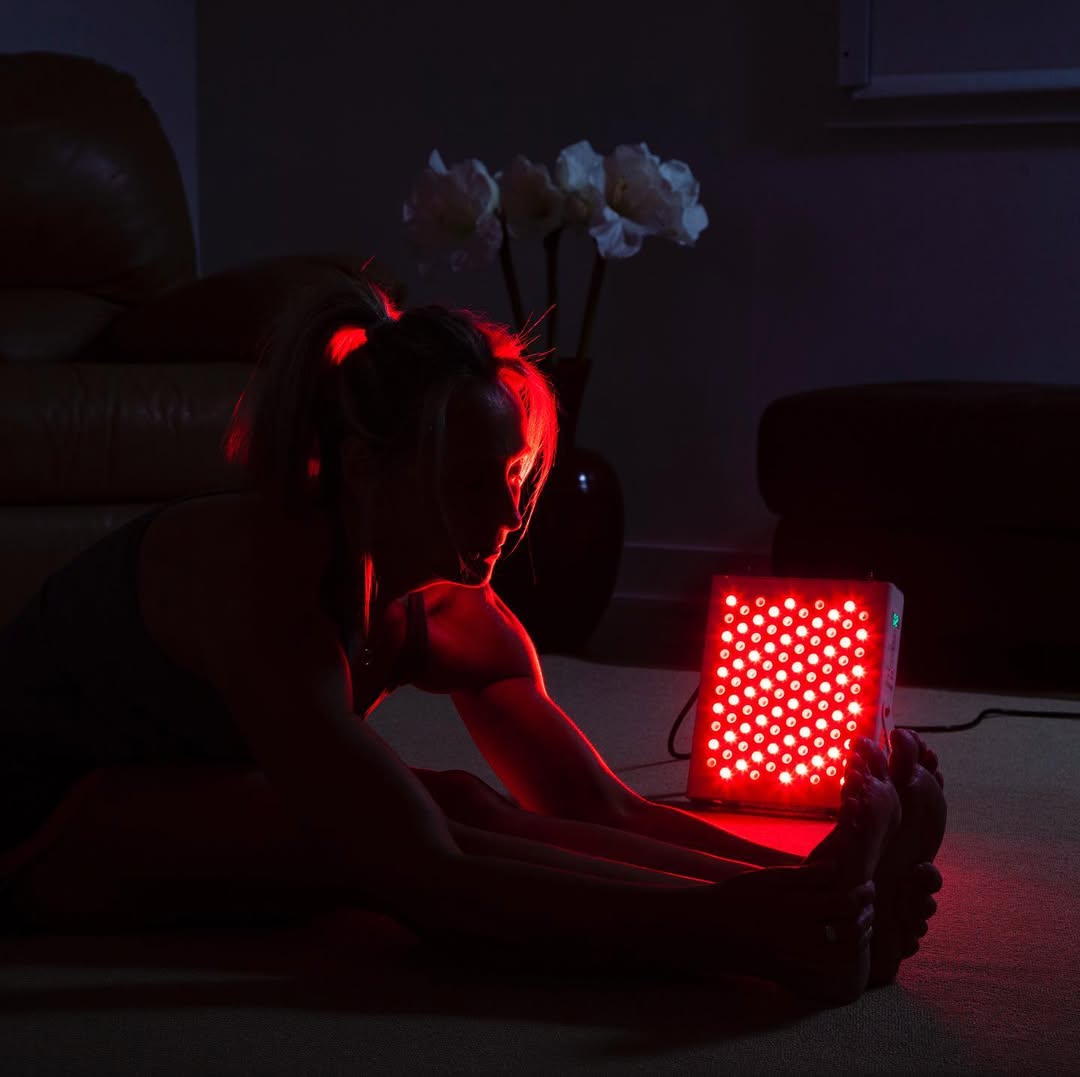![]() Free Shipping
Free Shipping ![]() Buy Now, Pay Later
Buy Now, Pay Later ![]() Eligible
Eligible
Red Light Therapy After Laser Hair Removal: The Ultimate Guide to Faster Healing and Better Results

Laser hair removal is a popular cosmetic procedure that offers long-term hair reduction by targeting hair follicles with concentrated light energy. While effective, the process can sometimes cause temporary side effects like redness, swelling, and irritation. To speed up recovery and enhance results, many people are turning to red light therapy (RLT) as a post-treatment solution.
But does red light therapy really help after laser hair removal? How should you use it? And what benefits can you expect?
- The science behind red light therapy
- How it complements laser hair removal
- Step-by-step aftercare with RLT
- Potential risks and precautions
- Expert recommendations
Whether you’re a first-timer or a laser hair removal veteran, this guide will help you maximize your results while keeping your skin healthy and glowing.
Chapter 1: Understanding Laser Hair Removal and Its Side Effects
Before diving into red light therapy, it’s essential to understand how laser hair removal works and why aftercare matters.
How Laser Hair Removal Works
Laser hair removal uses focused light beams to target melanin in hair follicles. The heat from the laser damages the follicle, inhibiting future hair growth. However, since the laser also interacts with the surrounding skin, some temporary side effects are common.
Common Side Effects
- Redness & Swelling (similar to a mild sunburn)
- Tenderness or Sensitivity
- Itching or Dryness
- Temporary Pigment Changes (more common in darker skin tones)
These effects usually subside within 24–48 hours, but proper aftercare can minimize discomfort and speed up recovery.
Chapter 2: What Is Red Light Therapy?
Red light therapy (RLT), also known as low-level laser therapy (LLLT) or photobiomodulation, is a non-invasive treatment that uses red and near-infrared light to stimulate cellular repair.
How Does Red Light Therapy Work?
- Penetrates skin layers (up to 5–10 mm deep)
- Boosts collagen & elastin production
- Reduces inflammation
- Enhances blood circulation
Originally used in medical settings for wound healing, RLT has gained popularity in skincare, pain relief, and post-procedure recovery.
Benefits of RLT for Skin
✔ Speeds up healing (great after laser treatments)
✔ Reduces redness & irritation
✔ Minimizes scarring & hyperpigmentation risk
✔ Improves skin texture & tone
VELLGUS Elite V2
THE #1 RATED RED LIGHT DEVICE
VELLGUS pro V2
THE #1 RATED FULL BODY RED LIGHT DEVICE
Chapter 3: Why Use Red Light Therapy After Laser Hair Removal?
Combining laser hair removal + red light therapy can optimize results and improve skin recovery. Here’s how:
1. Reduces Inflammation & Redness
Laser treatments cause micro-injuries to the skin. RLT helps calm inflammation by increasing blood flow and reducing oxidative stress.
2. Accelerates Skin Healing
RLT stimulates fibroblast activity, which aids in tissue repair. This means less downtime and faster recovery.
3. Lowers Risk of Hyperpigmentation
Post-laser dark spots are a concern, especially for darker skin tones. RLT helps regulate melanin production, reducing discoloration risks.
4. Strengthens Skin Barrier
By boosting collagen, RLT helps maintain skin elasticity, preventing excessive dryness or peeling.
5. Enhances Hair Reduction Results
Some studies suggest that RLT may prolong the effects of laser hair removal by keeping follicles dormant longer.
Chapter 4: How to Use Red Light Therapy After Laser Hair Removal
When to Start?
- Wait 24–48 hours post-laser before using RLT to avoid irritation.
- If your skin is still very sensitive, delay until redness subsides.
Best RLT Devices for Home Use
- Handheld LED masks (for small areas like face)
- Panel devices (for larger areas like legs or back)
- Professional-grade RLT beds (available at spas)
Step-by-Step Routine
- Cleanse skin gently (avoid harsh scrubs).
- Apply a soothing serum (aloe vera or hyaluronic acid).
- Use RLT for 10–20 minutes (follow device instructions).
- Moisturize with a fragrance-free lotion.
- Repeat 2–3 times per week for best results.
Chapter 5: Potential Risks & Precautions
While RLT is generally safe, some precautions include:
Who Should Avoid RLT After Laser?
- Open wounds or burns (wait until fully healed)
- Photosensitivity disorders (consult a doctor first)
- Active skin infections (RLT could worsen them)
Possible Side Effects
- Mild warmth or tingling (normal)
- Temporary dryness (keep skin moisturized)
- Overuse can cause irritation (stick to recommended sessions)
Chapter 6: Expert Tips for Best Results
- Hydrate Inside & Out – Drink water and use hydrating skincare.
- Avoid Sun Exposure – Laser + sun = higher pigmentation risk.
- Combine with Other Soothing Treatments (e.g., cold compress first 24 hours).
- Be Consistent – RLT works best with regular sessions.
Conclusion: Should You Try Red Light Therapy After Laser Hair Removal?
Yes! Red light therapy is a safe, effective, and science-backed way to enhance laser hair removal results. By reducing inflammation, speeding up healing, and improving skin health, RLT can make your post-laser experience smoother and more comfortable.
If you’re considering adding RLT to your routine:
- Start slow (1–2 sessions per week).
- Choose a high-quality device.
- Monitor your skin’s response.
With the right approach, you’ll enjoy smoother, hair-free skin with minimal downtime!
Final Thoughts
Have you tried red light therapy after laser hair removal? Share your experience in the comments! If you found this guide helpful, bookmark it for future reference and explore our other articles on skincare and beauty treatments.








